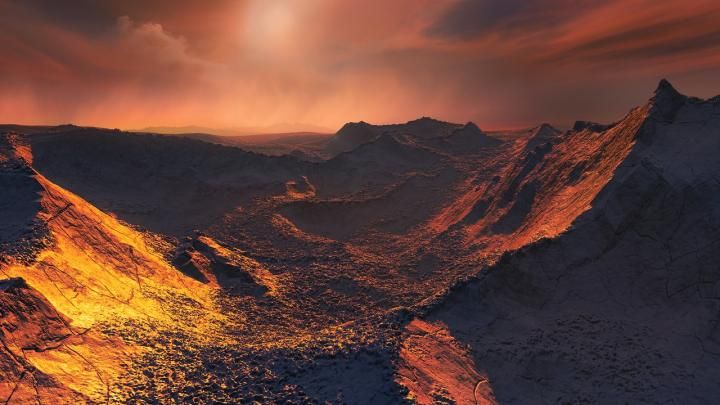
A super-Earth has been discovered orbiting a star just six light-years away from Earth. It was found by an international team of scientists searching for rocky planets beyond our solar system. Their findings have been published in the journal Nature. Here are 10 things you need to know:
It's called Barnard's Star B
The star it orbits is called Barnard's Star. This is a red dwarf—a type of small and cool star smaller than our Sun. The planet is named after the star it orbits. The letter 'b' is the suffix showing it is the first planet in the system—for example, if there were another planet in this system, it would likely be called Barnard's Star c.
It's very cold
Red dwarfs are far smaller and cooler than our own star, and thus emit far less heat. This means that even though Barnard's Star b is about half as close as Earth is to the Sun, it only gets about two percent of the energy the Earth receives from the Sun. As a result, scientists estimate its surface temperature is around -150C.

It's bigger than Earth
Barnard's Star b is estimated to have a mass around three times that of Earth. This makes it a super-Earth—a planet that has a mass somewhere between Earth and Uranus or Neptune.
It probably isn't habitable
Barnard's Star b sits far beyond the solar system's habitable zone. This is the area in the solar system sometimes referred to as the Goldilocks Zone—as it is not too hot or too cold for liquid water to exist. The presence of water—according to our current understanding—is thought to be a prerequisite for life to thrive.
It appears to be rocky
Observations of the planet indicate it is a rocky world. It was discovered as part of a project to find rocky planets around red dwarfs and the instruments used to do this—including the CARMENES (Calar Alto high-Resolution search for M dwarfs with Exoearths with Near-infrared and optical Échelle Spectrographs)—are specially designed to do this.
It's the second closest exoplanet to our Sun
Barnard's Star b is six light-years from Earth. The next closest exoplanet (a planet outside our solar system) is Proxima b, which orbits the red dwarf Proxima Centauri. Unlike Barnard's Star b, Proxima b is seen as a good candidate in the search for alien life as it appears to be within the star's habitable zone.
It was found with radial velocity technique
It is the first time such a small planet that sits so far from its star has been found using radial velocity technique. This is where planets are detected using gravity—both the star's influence on the planet and the planet's influence on the star. Tiny wobbles allow scientists to pinpoint new planets.
Its orbit is shorter than Earth's
Barnard's Star b appears to have an orbital period of 233 days. This means a year on the newly discovered planet is shorter it is on Earth.

It's not been observed directly
The discovery of Barnard's Star b was through indirect observations. Researchers hope to study the planet using a variety of instruments that would allow for direct observations. These include NASA's Wide Field Infrared Survey Telescope (WFIRST) and the European Space Agency's Gaia astrometry mission. Direct observations will provide more detail about the planet's properties.
Barnard's Star is very old
Barnard's Star formed way before our solar system existed. It is estimated to be between seven and 12 billion years old—very old in comparison to our Sun, which is 4.5 billion years old. It is so old scientists think it could be one of the Milky Way's first stars. Studying Barnard's Star b will provide an insight into what sort of planets can form around these old red dwarfs.
Uncommon Knowledge
Newsweek is committed to challenging conventional wisdom and finding connections in the search for common ground.
Newsweek is committed to challenging conventional wisdom and finding connections in the search for common ground.
About the writer
Hannah Osborne is Nesweek's Science Editor, based in London, UK. Hannah joined Newsweek in 2017 from IBTimes UK. She is ... Read more
To read how Newsweek uses AI as a newsroom tool, Click here.








